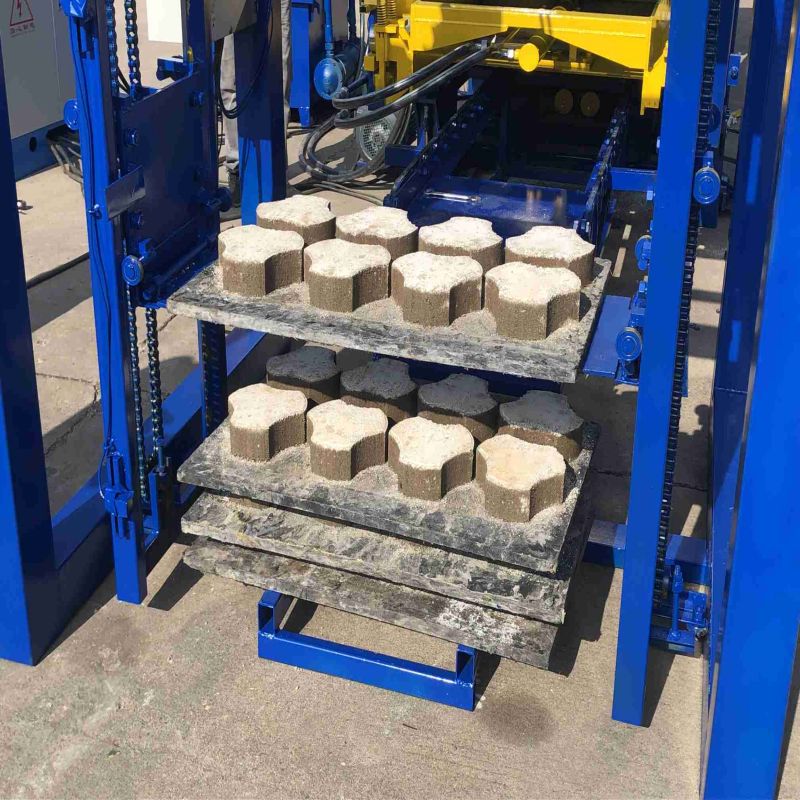
Image source:Aiwei block machine
Introduction
Block making machines are integral to the construction industry, serving as key equipment for producing building blocks and bricks. The prices of these machines vary significantly worldwide due to a multitude of economic factors. This article provides a global perspective on the economic forces that influence block making machine prices. By understanding these factors, stakeholders in the construction machinery market can make informed decisions, whether they are buyers, manufacturers, or policymakers.
1. The Role of Block Making Machines in Construction
Block making machines are essential tools in construction, used for producing building blocks and bricks for various types of structures.
2. Economic Factors at Play
Global economic landscape: The overall economic condition of a country or region plays a significant role in determining the affordability of block making machines. Countries with stable economies tend to have higher machine prices due to increased demand.
Labor costs: Labor costs directly impact the cost of manufacturing block making machines. Higher labor costs in developed countries can lead to more expensive machines.
Material costs: The cost of raw materials used in manufacturing, including steel, electronics, and hydraulics, affects machine prices. Fluctuations in material prices can lead to price variations.
Exchange rates: Currency exchange rates can impact the cost of imported components and materials used in machine production.
Inflation rates: High inflation rates can lead to an increase in the overall production cost, which may be passed on to consumers.
3. Regional Variations in Block Making Machine Prices
Developed countries: Developed nations, such as the United States, Germany, and Japan, tend to have higher block making machine prices due to factors like higher labor and material costs, advanced technology, and strict quality standards.
Developing countries: Developing countries often offer more affordable block making machines because of lower labor costs, less stringent regulations, and lower technology adoption.
Asia: Many developing countries in Asia, including China and India, are major manufacturers of block making machines. They produce a wide range of machines at competitive prices, thanks to low labor costs and a strong manufacturing sector.
Europe: Developed European nations, like Germany and Italy, are known for producing high-quality, technologically advanced machines, which come at a premium price.
4. Technology and Innovation
Advanced technology and automation in block making machines can significantly impact their prices. Machines with more sophisticated features and automation tend to be more expensive due to research and development costs.
5. Quality Standards and Regulations
Stringent quality standards and regulations, common in developed countries, can increase production costs and subsequently machine prices.
6. Market Demand and Competition
Market demand and the level of competition among manufacturers also influence prices. In regions with numerous manufacturers, prices may be more competitive.
7. Sustainability and Environmental Considerations
Growing environmental concerns are leading to the development of eco-friendly block making machines, which may come at a higher price due to the investment in green technologies.
8. Economic Impact on the Construction Industry
Block making machine prices have a direct impact on the construction industry’s cost structure. Lower-cost machines in developing countries can make construction more affordable, leading to increased activity in the sector.
9. Future Trends
As technology continues to advance, we can expect to see more affordable, technologically sophisticated machines that cater to a broader range of markets. Sustainability and eco-friendliness will likely become more significant factors in machine pricing.
Conclusion
Block making machine prices are influenced by a complex interplay of economic factors, including labor costs, material prices, exchange rates, inflation rates, technology, and quality standards. These economic forces shape the accessibility of construction machinery worldwide and impact the cost structure of the construction industry. As the construction machinery market evolves, understanding these economic factors will be crucial for all stakeholders to make informed decisions and contribute to the growth and sustainability of the construction sector on a global scale.
